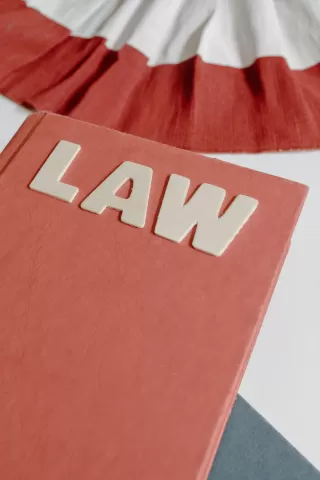A felt sense of being coerced is an important indicator.
Key points
- A number of state statutes have recently recognized the reality that coercive control is domestic violence.
- The experience of being coerced by an intimate partner is often unclear to the survivor.
- Recognizing coercive tactics undermines the abuser’s power and helps the survivor heal.
 This past October, domestic violence month, was also a time to recognize changes to the legal definition of domestic violence. This year’s statutory progress included coercive control in intimate relationships as domestic violence. For decades, non-physical abuse in the form of psychological abuse was not recognized, to the detriment of thousands of female and male survivors. Now, in many US states, coercive control laws exist. These laws are a great start in recognizing, validating, and offering protection for coercive control in intimate relationships. However, the individual in a coercive controlling relationship is unlikely to easily see how such a law can help them. However, given the nature of coercive control, there are some useful indicators that can raise awareness of coercion taking place with an intimate partner.
This past October, domestic violence month, was also a time to recognize changes to the legal definition of domestic violence. This year’s statutory progress included coercive control in intimate relationships as domestic violence. For decades, non-physical abuse in the form of psychological abuse was not recognized, to the detriment of thousands of female and male survivors. Now, in many US states, coercive control laws exist. These laws are a great start in recognizing, validating, and offering protection for coercive control in intimate relationships. However, the individual in a coercive controlling relationship is unlikely to easily see how such a law can help them. However, given the nature of coercive control, there are some useful indicators that can raise awareness of coercion taking place with an intimate partner.
Coercive Control
Coercive control targets thoughts, feelings and perception. A foremost loss is an erosion of trust in one’s own perception that makes it more difficult to step back and see what is happening to them by the person they expected to be a caring partner.
By expanding the definition of abuse to include coercive control, the states with statutes reflect the reality that coercive control is domestic violence. For example, in Massachusetts, the statute defines coercive control as:
- A pattern of behavior intended to threaten, intimidate, harass, isolate, control, coerce or compel obedience of a family or household member that causes that family or household member to fear physical harm or experience a reduced sense of physical safety or autonomy, or
- A single act of attempting to injure a child relative of the survivor, abusing or attempting to commit abuse to an animal connected to the survivor, or publishing or attempting to publish sexually explicit images of the survivor. A survivor must show that the single act was intended to threaten, intimidate, harass, isolate, control, or coerce the survivor to conform and causing the survivor to reasonably fear physical harm or have a loss in their sense of physical safety or autonomy, according to the Victim Rights Law Center.
For the individual in a coercive controlling relationship, they are experiencing some of the elements of the statutes, yet the presence of coercion gets missed by the insidious nature of coercion and the subtle emotional impact that gets in the way of recognizing the coercion.
In my experience of working with survivors of coercive control in their relationships, the majority did not see the slow coercive style of their intimate partner for a long time. It doesn’t matter their level of intelligence, education, or income. Anyone can end up with a coercive partner.
Indicators of Coercive Control
First, it’s important to determine if signs of control might be present, and then do a deeper dive and figure out what is going on in one’s intimate relationship. Some indicators of coercive control:
Intimidation and Capitulation
When we find ourselves capitulating to a partner, over and over, we are very likely being coerced. An article written by a domestic violence advocate cites how she works with survivors of coercive control and failed to see the coercive control in her own relationship from her husband impacting her and her children (The Guardian, March 2025). What she missed was how her husband used her vulnerability of being a mother, which gradually led to her capitulating to her husband in order to protect her children.
Vigilance
With a coercive partner over time, it’s not unusual to develop vigilance of one’s partner and behavior in order to protect one’s self. What is their mood? How might they react? In time, spontaneity is replaced with calculated responses to try to stay out of harm’s way—to avoid the pain of verbal assaults, degrading attacks, etc. Many survivors describe losing themselves and even their own identity.
Isolation
When your world shrinks, look to see if you’ve lost freedom to make your own choices, go where you want to go, etc. Then, determine if this is orchestrated by your partner’s threats, or other behaviors that discourage you from doing what you want.
Financial
It’s easy to become isolated when access to money gets restricted. Are you aware of your finances and have access to funds? Are you able to participate in financial decisions? Or, do you need permission to spend money, or are you afraid to ask?
Steps to take a deeper dive
When you suspect you are being coerced, reach out to a domestic violence advocate, a domestic violence helpline, or other support who’s knowledgeable of domestic violence to get better informed about coercive tactics that could be embedded in your partner’s behavior. Unpacking your experience can eventually lead to a return of trust in your perception. It’s often when this takes place, a feeling of agency begins to return, and next steps can become possible.
This post originally appeared on Psychology Today.




Leave a Reply